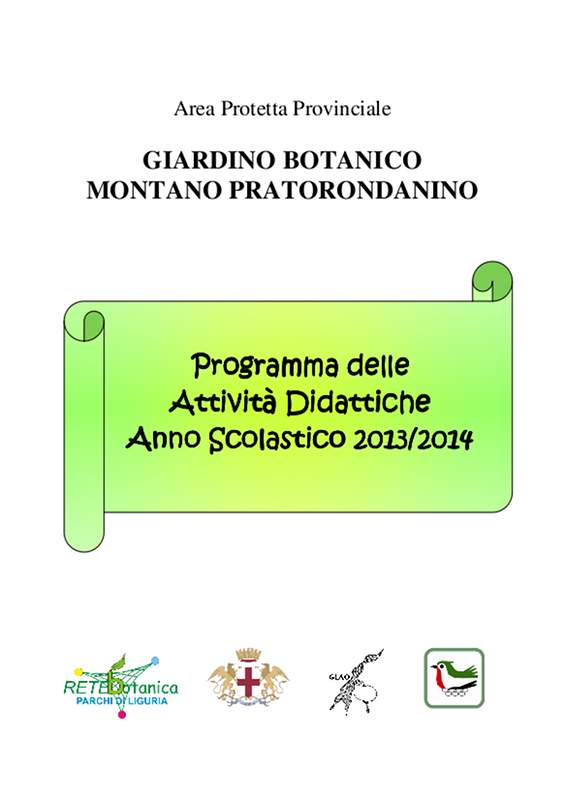Education
Didactic Proposals School Year 2013/2014
Pratorondanino Botanic Garden, created in 1979 by G.L.A.O. (Gruppo Ligure Amatori Orchidee – Ligurian Group of Orchids Enthusiasts), is situated in the Municipality of Campo Ligure, in loc. Pratorondanino, at 750m asl.
In 1998, Regione Liguria established the Regional Protected Area "Giardino Botanico di Pratorondanino", entrusting its management to the Province of Genova, that decided to maintain the historical management of G.L.A.O. The Botanic Garden focuses on the reconstruction of various mountain environments: this gives the opportunity to house over 400 species coming from all over the world, you can observe during the guided visits led by the members of the G.L.A.O.
The Pratorondanino Mountain Botanical Garden introduces the schools to the new program of the didactic activities for the school year 2013/2014. The proposals deal with a wide range of subjects about natural science (botany, zoology, ecology, geology...) and with themes which are strictly connected with the local reality, combining the didactic/educational purposes and the enhancement of the territories natural and cultural resources.
The projects usually consist of an introductory stage characterized by meetings and classroom activities, and a later stage based on guided visits to the Garden and practical activities carried out at the Center for didactics housed in the Garden.
The classroom meetings last about one and a half hours or two hours, the outings are organized from April to June and they can be carried out within a period of half day or a whole day.
The activities are managed by women graduated in Natural Science who also have an experience in the field of the environmental education and of the museum didactics.
The participation in the project is financed by the Province of Genua, therefore the schools deciding to join the activities are only charged the transport expanses. The road leading to the Garden, completely asphalted, does not allow the big means of transport to easily pass, therefore the transport must be carried out by means of small buses (maximum 30 seats).
Click here to find all the Environmental Education Proposals (Italian text)






